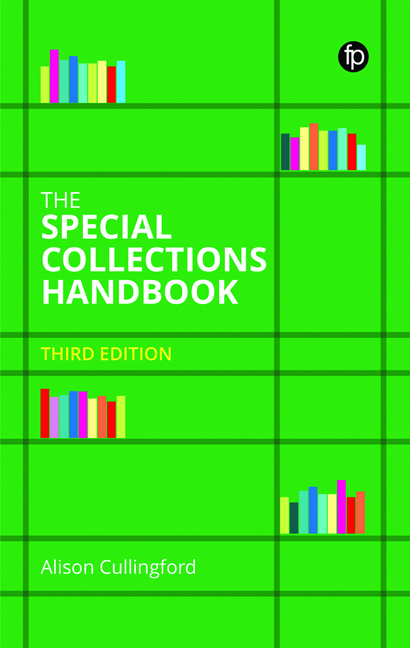Book contents
Introduction
Published online by Cambridge University Press: 28 April 2022
Summary
Introducing Special Collections
So what are Special Collections, and where are they to be found?
Special Collections are held by all kinds of organisations: research libraries, universities, colleges, schools, national libraries, public libraries, museums, art galleries, archives, historic houses, cathedrals, subscription libraries, learned societies, hospitals, companies, monasteries …. Attar (2016) lists over 800 organisations with Special Collections in the British Isles. They include many kinds of material: early printed books, manuscripts, pamphlets, ephemera, maps, photographs, archives, newspapers, digital files …
The term ‘Special Collections’ can refer to the collections themselves, the staff who care for them, the physical and virtual spaces they occupy and the administrative department in a larger library that manages all these entities. In this Handbook, the context should make it clear which meaning is intended.
The term also implies the existence of other, non-special collections. Many Special Collections services are part of a general library offering other services, an arrangement typical of university and research libraries. However, you will also encounter libraries that contain mostly ‘special’ material, in which case the term is less likely to be used.
Different libraries use Special Collections to describe slightly different sets of material. For example, archives may or may not be part of ‘Special Collections’. Rare books and manuscripts are usually part of Special Collections, but some libraries reserve the term only for modern material. These variations tend to be legacies of previous organisational structures.
To make this book as useful as possible, I take a broad and pragmatic view of ‘Special Collections’, covering any material that is likely to be managed by any Special Collections service, following the Association of College and Research Libraries’ definition:
The entire range of textual, graphic, and artifactual primary source materials in both analog and digital formats, including printed books, ephemera, manuscripts, photographs, maps, artworks, audio-visual materials, archival materials, and other objects.
(Association of College & Research Libraries, 2020)What makes these diverse materials ‘special’? Historically, they were collections perceived to need special care, too old, valuable, rare, unique or fragile to be stored on open library shelves and borrowed by readers.
- Type
- Chapter
- Information
- The Special Collections Handbook , pp. xvii - xxPublisher: FacetPrint publication year: 2022



